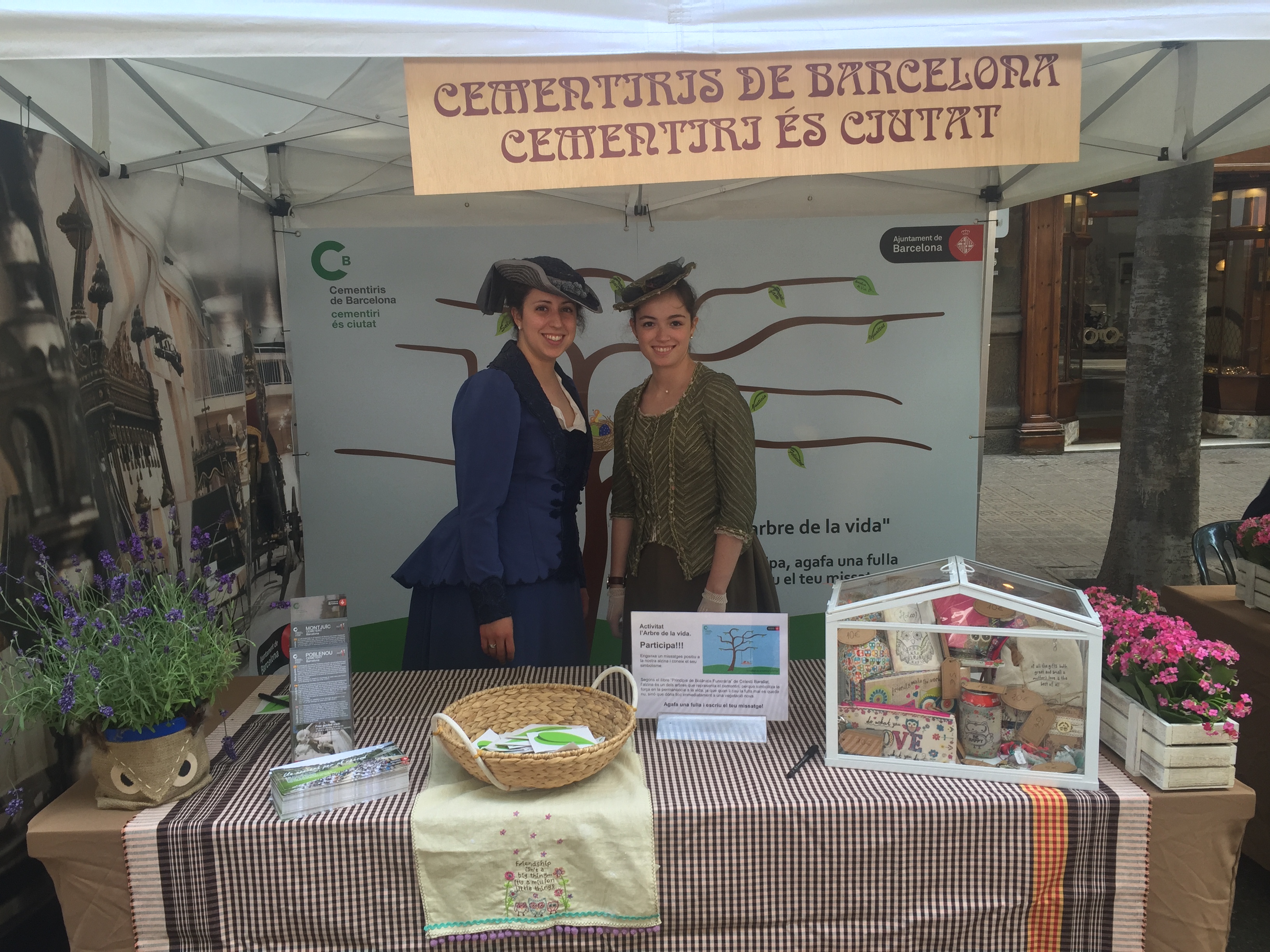
Modernist Fair

Barcelona offers a leap back in history to the end of the 19th and beginning of the 20th century to walk around and enjoy its unique architectural and cultural heritage. The aim of the Modernist fair is to discover the city through the hand of an artistic movement that would end up forging the landscape and personality of Barcelona and its cemeteries, making it the world capital of Modernism.
Cementiris de Barcelona collaborates every year in this fair with workshops and activities for children that help to naturalize the fact of death.
One of these activities is Tree of Wishes. The purpose of this workshop is to offer to all the visitors the opportunity to write a positive thought on the leaves that will be drawn on the top of the tree.
Itineraries around Barcelona cemeteries
In collaboration with the Libraries of Barcelona, Cementiris de Barcelona have prepared a series of literary and historical routes through different neighborhoods of Barcelona in which classical and modern literature show us the other sides of familiar places that have often been forgotten. Among them are also three routes on cemeteries.
Art and culture in Sant Gervasi Cemetery
The Sant Gervasi Cemetery was founded in 1853 in response to the demands of
a town in the process of transformation. In the mid-19th century, Sant
Gervasi de Cassoles, a small country town, became a refuge for many of
Barcelona's bourgeois families in search of a better quality of life.
We propose an itinerary through a cemetery of great patrimonial value, the sample of richness and taste for the art work on the tombs engrave the towers that are being built in the area. In addition, we will approach key figures of Catalan culture such as Joan Maragall and Lluís Domènech i Montaner, among others.
The Cemetery of Sant Andreu, the identity of people
The richness of its water and the subsequent strength of its industry made
Sant Andreu de Palomar the most populated town in Barcelona. For
this reason, it was the first to build a center adapted to the needs of a
new society, following in the footsteps of Poblenou
Center in Barcelona.
We propose an itinerary to follow the evolution of the Sant Andreu and the historical and artistic heritage that can be seen. Finally, we will visit the Cemetery of Sant Andreu, one of the most representative cultural places of the old town with its own character that we preserve today.
The Cemetery of Les Corts, the history of a village
Les Corts was a village with a small population living in farmhouses, which
formed its physiognomy until the mid-19th century. The industrialization process
changed its markedly rural character forever and the strong demographic growth
transformed the town until its annexation to Barcelona.
We propose an itinerary in which we deal with the origins of the
Corts and its evolution, and we do so by accompanying the most representative
heritage legacy of the neighborhood and its cemetery. From the most important
graves, we can connect with the old town of Les Corts and get to know the
figures who were the driving force behind it.
In addition, we will also discover the Barça footballers who are
also buried there, as well as the first Hebrew Enclosure in the city of
Barcelona.



